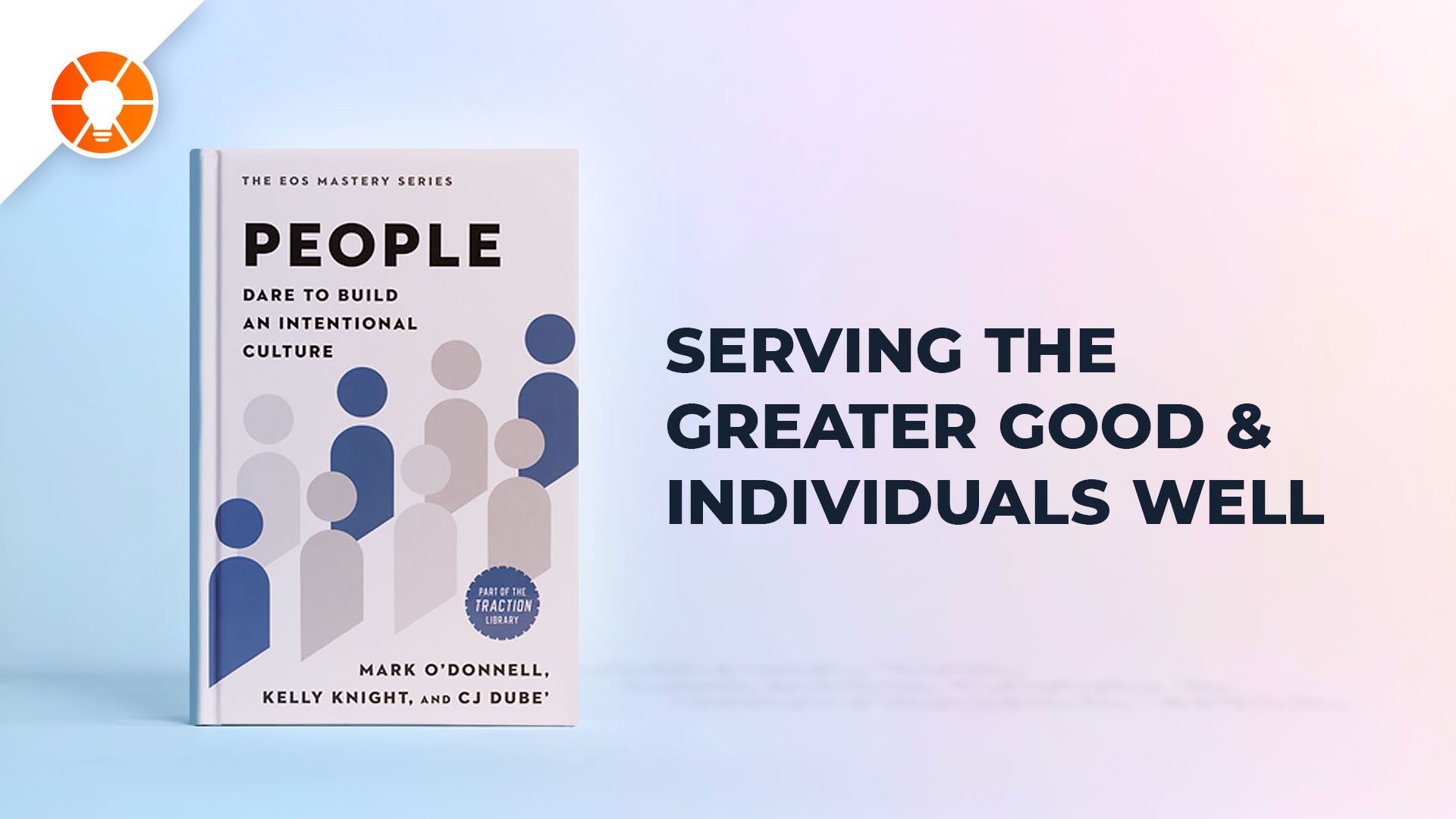
As a leader in an EOS® company, you have hopefully continued to realize the importance of all of the EOS Tools you are using in your business.
That’s why as I finish up quarterlies, it is inspiring to see leaders using the V/TO™, Accountability Chart, Rocks, Meeting Pulse™, and the Scorecard to stay aligned and focused, even in an environment where many have had to speed up daily rhythms.
Seeing the strength and courage that emerges from a healthy leadership team as they use these tools is encouraging. It is extra motivating to watch teams step back and start to look for opportunities to grow despite the conditions that exist today. They are using their heads well.
But what about the heart?
Getting Back To The Foundation
As we adjust to what many are calling our “new normal,” the environment continues to require us to focus on things like cash, safety, and our own self-preservation as parents, siblings, caregivers, and friends. It is more important than ever to go back to two foundational beliefs we all nodded our heads to at the start of this EOS journey:
- You care about your people
- You want to be a great leader
When you used the foundational tool of LMA™ to self-reflect as a leader, these were important assumptions that were shared. Well, now is the time to return to those, because it is too easy to just nod your head when these are spoken and skip past the harder question of “How would your team answer these questions for you?”
We judge ourselves based on our intent. We judge others based on their actions.
– Stephen M.R. Covey, Speed of Trust
At the heart of EOS is the belief that culture is a critical part of an organization’s success, which is one of the reasons Core Values is the first part of the V/TO.
The second belief goes back to these two assumptions about leaders, and it is that people will go the extra mile for leaders that show they care about them.
Align Your Head With Your Heart
At the base of the brain is the amygdala, which controls our fight or flight responses in a crisis. When that part of the brain is controlling us, the decisions we make are reactive and often lack things like reasoning, data, or input from others.
The natural response in a crisis is to lean on the amygdala more, which causes us to make impulsive decisions (fight) without telling the rest of our leadership team or to procrastinate (flight) on key decisions that need to be made to help move forward. Author Seth Godin nicknamed the amygdala the lizard brain, and reminds us of the basic challenge we all face:
The lizard brain is here to keep you alive, the rest of your brain merely makes you a happy, successful, connected member of society.
-Seth Godin, Linchpin
Caring for your people is always an intent, but in my experience as a leader and working with dozens of leaders, the actions that demonstrate caring rarely come out of amygdala-generated responses.
The challenge I put to you is to step back and make sure in the days going forward, you move past the amygdala and allow the rest of your brain and your heart to do the work. Here are three specific actions to move past intent and into action:
- Keep a meeting pulse going. Hopefully, your whole organization is staying connected by a weekly meeting. If not, make sure you start that habit and continue it.
- Ask this powerful question and listen. At a recent quarterly meeting, a leadership team member thanked a teammate for asking the pointed question, “How are you REALLY doing?” By adding the word REALLY and then sitting down, it sent the message they wanted to hear the open and honest truth. The conversation that followed was just what that leader needed. They decided to add it to their Level 10 Meeting™ segue as a way of caring for each other during the coming weeks.
- Take care of yourself. You cannot be a great leader if you are not taking care of yourself. Fear, uncertainty, lack of control, and exhaustion are all hooks that will trigger your lizard brain to take over. In addition to weekly Clarity Breaks™, add things like exercise, family dinners, and free days (no emails or any other work-related activity) to allow you time to refresh and connect with people who love you.
If you focus on new ways to keep your head and your actions aligned with your core belief that you care about your people, then becoming a great leader will take care of itself. Great leaders are always looking in the mirror and finding ways to improve despite the success they have had in the past.
The hidden power in leadership is unleashing your heart so that people see and feel your commitment to their success.
Next Steps:
- Download a free chapter of Traction by Gino Wickman
- Download a free chapter of How to Be a Great Boss by Gino Wickman and René Boer to learn how to be a more effective leader and manager.
- Request a free 90-Minute Meeting with an EOS Implementer® to get a clear picture of what it looks like to run your company on EOS.






